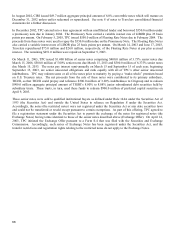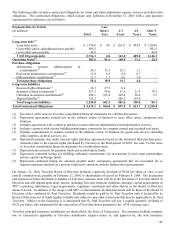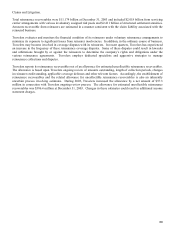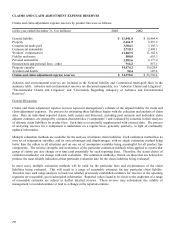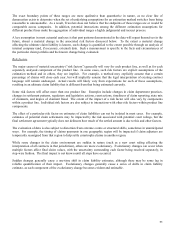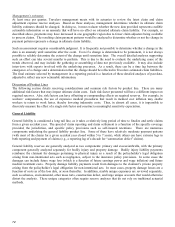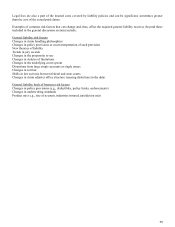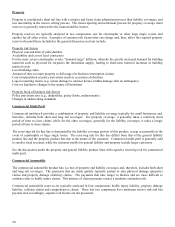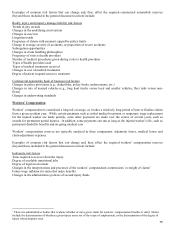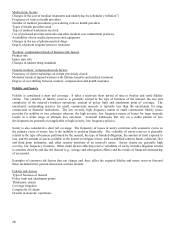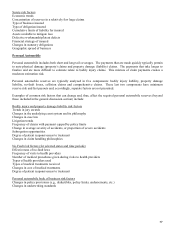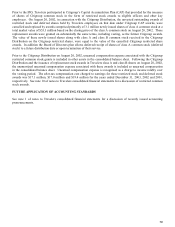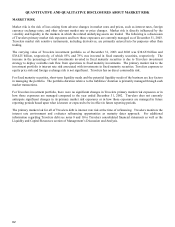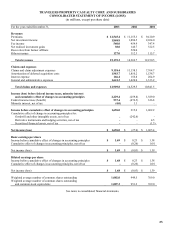Travelers 2003 Annual Report Download - page 77
Download and view the complete annual report
Please find page 77 of the 2003 Travelers annual report below. You can navigate through the pages in the report by either clicking on the pages listed below, or by using the keyword search tool below to find specific information within the annual report.
75
Examples of common risk factors that can change and, thus, affect the required commercial automobile reserves
(beyond those included in the general discussion section) include:
Bodily injury and property damage liability risk factors
Trends in jury awards
Changes in the underlying court system
Changes in case law
Litigation trends
Frequency of claims with payment capped by policy limits
Change in average severity of accidents, or proportion of severe accidents
Subrogation opportunities
Changes in claim handling philosophies
Frequency of visits to health providers
Number of medical procedures given during visits to health providers
Types of health providers used
Types of medical treatments received
Changes in cost of medical treatments
Degree of patient responsiveness to treatment
Commercial automobile book of business risk factors
Changes in policy provisions (e.g., deductibles, policy limits, endorsements, etc.)
Changes in mix of insured vehicles (e.g., long haul trucks versus local and smaller vehicles, fleet risks versus non-
fleets)
Changes in underwriting standards
Workers’ Compensation
Workers’ compensation is considered a long tail coverage, as it takes a relatively long period of time to finalize claims
from a given accident year. While certain payments such as initial medical treatment or temporary wage replacement
for the injured worker are made quickly, some other payments are made over the course of several years, such as
awards for permanent partial injuries. In addition, some payments can run as long as the injured worker’s life, such as
permanent disability benefits and on-going medical care.
Workers’ compensation reserves are typically analyzed in three components: indemnity losses, medical losses and
claim adjustment expenses.
Examples of common risk factors that can change and, thus, affect the required workers’ compensation reserves
(beyond those included in the general discussion section) include:
Indemnity risk factors
Time required to recover from the injury
Degree of available transitional jobs
Degree of legal involvement
Changes in the interpretations and processes of the workers’ compensation commissions’ oversight of claims1
Future wage inflation for states that index benefits
Changes in the administrative policies of second injury funds
1 These are administrative bodies that evaluate whether or not a given claim for workers’ compensation benefits is valid. Duties
include the determination of whether a given injury arose out of the scope of employment, or the determination of the degree of
injury where disputes exist.



